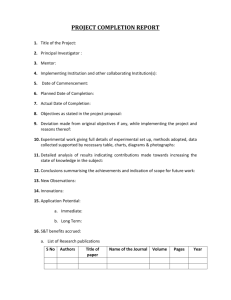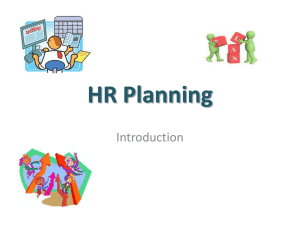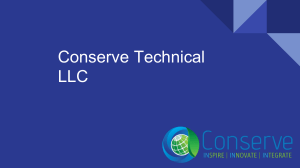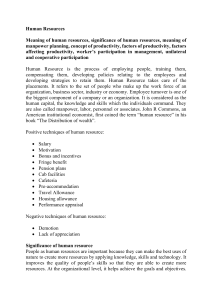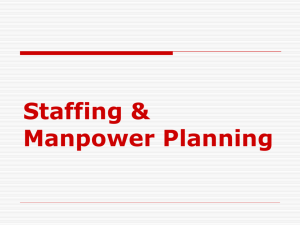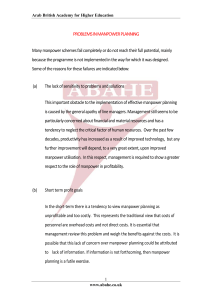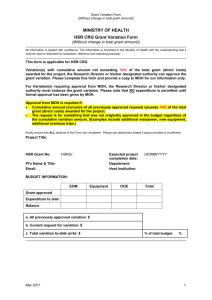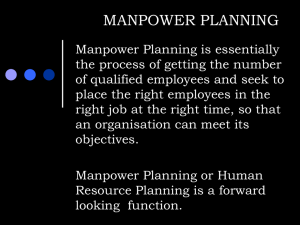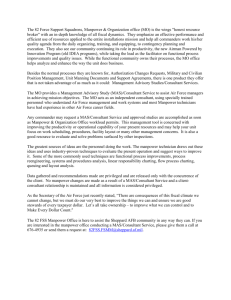MANPOWER PLANNING
advertisement
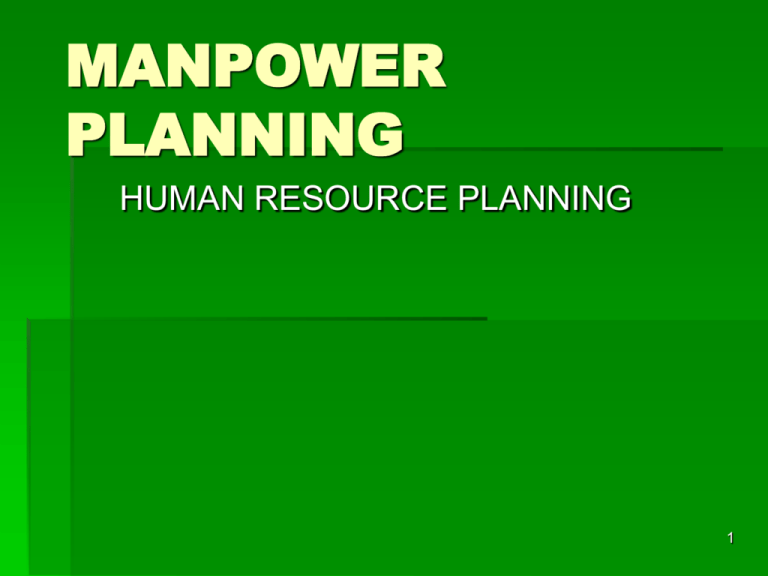
MANPOWER PLANNING HUMAN RESOURCE PLANNING 1 A strategy for the acquisition, utilisation,improvement and retention of an enterprise’s human resources METHODOLOGY 1. Forecasting demand 2. Forecasting supply Internal External 2 3. Reconciling supply/demand 4. Monitoring manpower utilisation 3 4 5 6 SOME MANPOWER PLANNING ISSUES 1. How does manpower planning tie in with corporate planning? 2. Who should manpower plan? 3. What detail and accuracy are required in manpower forecasts? 4. Over what period should forecasts and plans be attempted? 7 5. How does manpower planning link up with: Recruitment? Training? Remuneration? IR? 6. What changes in the organisation’s environment will need reflecting in the manpower plan? 8 What is the job?: The job is the smallest element of the organization. Definitons Task: A piece of work which can be identified in terms of its and results or objectives. Job: A number of tasks are sufficiently alike to be groupped together and allocated to as individual. 9 Position: The individual‘s place in the organization. Job description: A summary report of information relating to a particular job. 10 Person specification: A statement, derived from the job analysis process and the job description, of the characteristics that individual would need to possess in order to fulfill the requirements of the job. Occupation: A group of similar jobs. 11 MAIN APPROACHES TO JOB DESIGN Restructuring individual job Job rotation Job enlargement Job enrichment 12 Broader organisational approaches Desirable task and job characteristics Autonomous work groups Managerial style Management of change People as ‘agents’ Quality circles 13 JOB DESIGN Ideally a job should: constitute some sort of WHOLE (ie. there should be an identifiable task) be seen as meaninful and WORTH DOING allow the worker to take DECISIONS within the constraints set by the organisation. 14 Give direct FEEDBACK to the worker on his effectiveness Provide REWARDS which are SEEN TO BE FAIR for the inputs involved. 15
